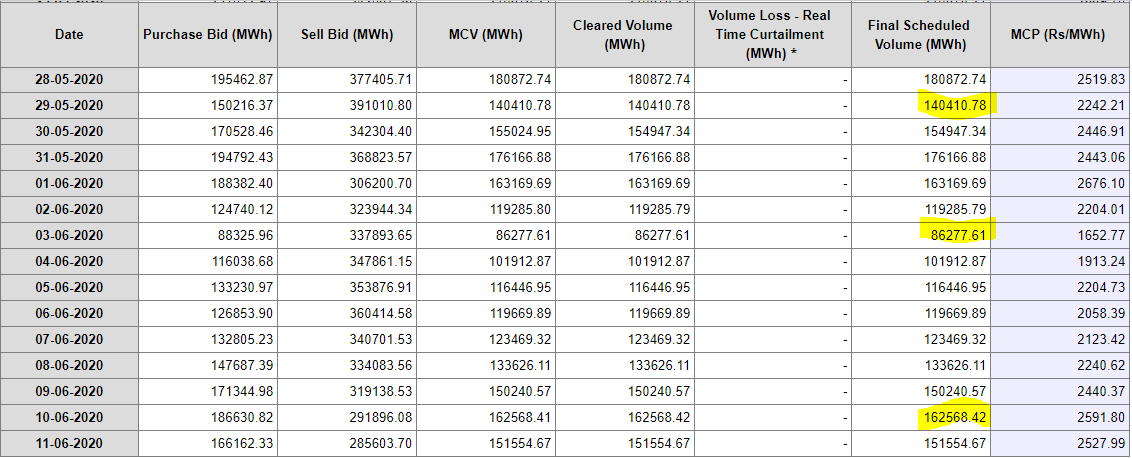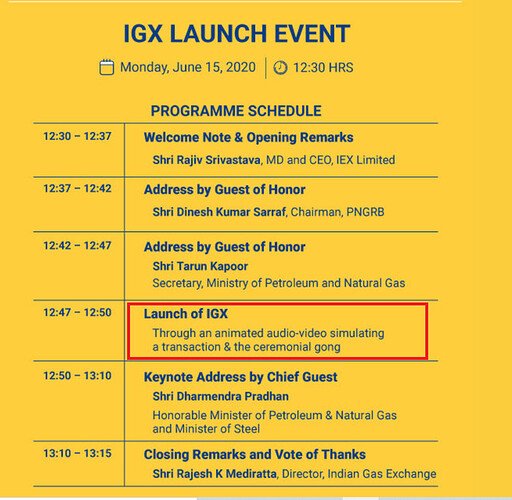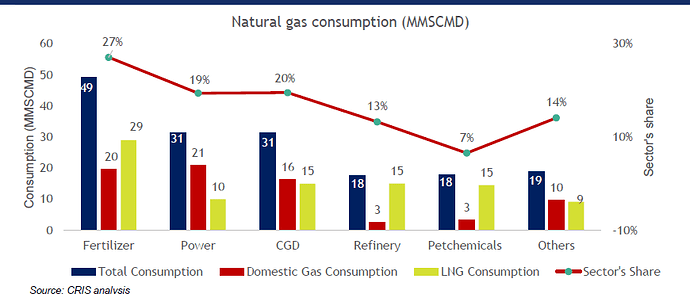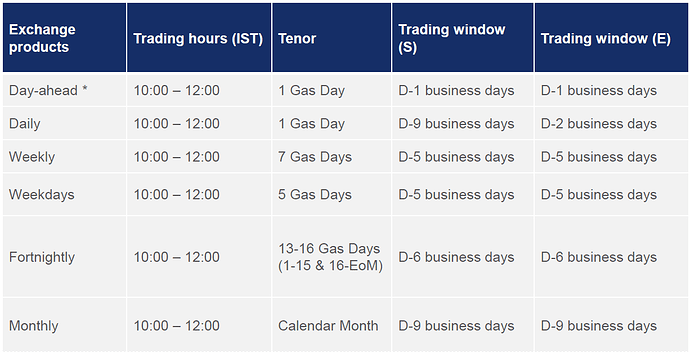Can anyone shed some light on how the pricing works in case of PPAs?
Do utilities need to pay for the entire contracted capacity or only for actual electricity consumed?
My current understanding is that utilities have to pay atleast some part of cost for the whole contracted capacity.
1 Like
Its a two part tariff, one for the capacity booked and another charge for the electricity consumed. so when they schedule power, the two charges are paid, Fixed charges and Variable charges. When the power is not scheduled due to reasons like low demand etc, then the utilities have to pay for the capacity they have booked.
For Eg 200 MW is being signed as PPA, and the PPA has been signed at a tariff of Rs 4 per unit with FC being 1.5 and VC being Rs 2.5 per unit, if the power is not scheduled then the utility have to pay for the 200 MW capacity of Rs 1.5 per unit
5 Likes
Thanks for the quick reply Balaji.
So if a discom is buying from the exchange they will still have to pay this fixed charges as for most discoms PPA are more or less equal to their Peak demand.
No not in Exchange, it is a single part tariff. I mentioned about the long term PPA. In exchange it is price discovery on DAM, RTM market etc
Yes, i meant if they buy from the exchange, they will still have to pay fixed charges under the PPA to the producer over and above the price of power on the exchange.
Yes, But one can utilize to buy short-term power from IEX incase of sudden surge of load much lesser price. If they overdraft from PPA may put penalty and high charge.
1 Like
Ankush, see this link. This is a real life example of how the Punjab DISCOM stopped purchasing from the Thermal Gencos and instead subtituted it with cheaper power from the exchanges.
For the DISCOMs, the exchanges provide the flexibility to buy and sell as needed. For the GENCOs, they can generate power and sell it on the exchange rather than let the assets idle. And since India is so vast and weather is so varied, there may be several buyers and several sellers at any given time.
6 Likes
IEX is launching IGX from 15th June.
Revenue potential is around Rs200 crores of which they are targeting 20% in First year.
1 Like
Remarkable ramp up in RTM market from zero to 23 MU in nine days.
But the volume in DAM is soft. Are there any inter-linkges ? Is volume in RTM is getting canabalised from DAM ? To me it looks unlikely but we will have to observe the two markets many more month and compare the yearly volumes vis a vis last year volumes to get a hang over it.
Remains bullish (disclaimer - invested) as one of the optionality (RTM) is getting played out and another optionality (Gas Xchange) is scheduled next week.
1 Like
Does not look like there is cannibalization coz DAM volumes fell prior to launch of RTM and started picking up along with pickup in RTM volumes. I think it has more to do with other variables like weather etc.
1 Like
Too early to comment anything on RTM, it could look like surge pricing (train, airline) and may be used for emergency stop gap arrangements by participants in long term. DAM pricing and volumes are more stable and sustainable.
1 Like
The launch event of IGX will have a small demonstration of actual working of a transaction.
Anyone looking to understand the working of the Gas Exchange should attend.
How did you arrive at 200 crs figure ?
Total Imported LNG consumed in India in FY20 was 33680 MMSCM- so that is 1.35 Billion MMBTU.
Spot LNG market is 30% which is the target area for IGX- so that is 0.40 billion MMBTU and IGX charges are Rs4-7 per MMBTU.
So assuming avg of Rs5 per MMBTU, we get Rs200 crores.
4 Likes
Also, i have considered 1MMBTU= 25 Scmd. But the ratio varies depending on the Gas. So some change of 5-10% may be there.
As per Adani Gas the ratio is 30 Scmd= 1 MMBTU, but IGX’s team has given 25.
1 Like
-
Cylinder gas is LPG (liquified petroleum gas), exchange is for Natural gas, piped gas connections at home are natural gas. CNG vehicles are also natural gas based.
-
IGX will primarily deal in Imported LNG (liquified natural gas), the price of which depends on international markets, so government has no say on the same. But government is looking to come out with a natural gas tariff policy- need to see how that works, whether the same would only be for domestic gas or transmission charges etc.
-
A lot of sectors use natural gas as primary power source like ceramics, fertilizer, power etc.
-
Products will develop over time, current portfolio is as follows-
-
Domestic gas (which is the subsidized gas) is allocated on priority basis to certain sectors and is available in limited qty. So i dont see how that will come to exchange, primary trading would be LNG which is not subsidized.
-
CGD companies like Gujarat Gas, MGL and IGL already source gas for their non B2C business side (ex- household and vehicles) from the spot market, which is what IGX will cater to. So they can buy on the exchange as well.
(Note: Above is my understanding, request other members to correct any mistakes)
2 Likes








